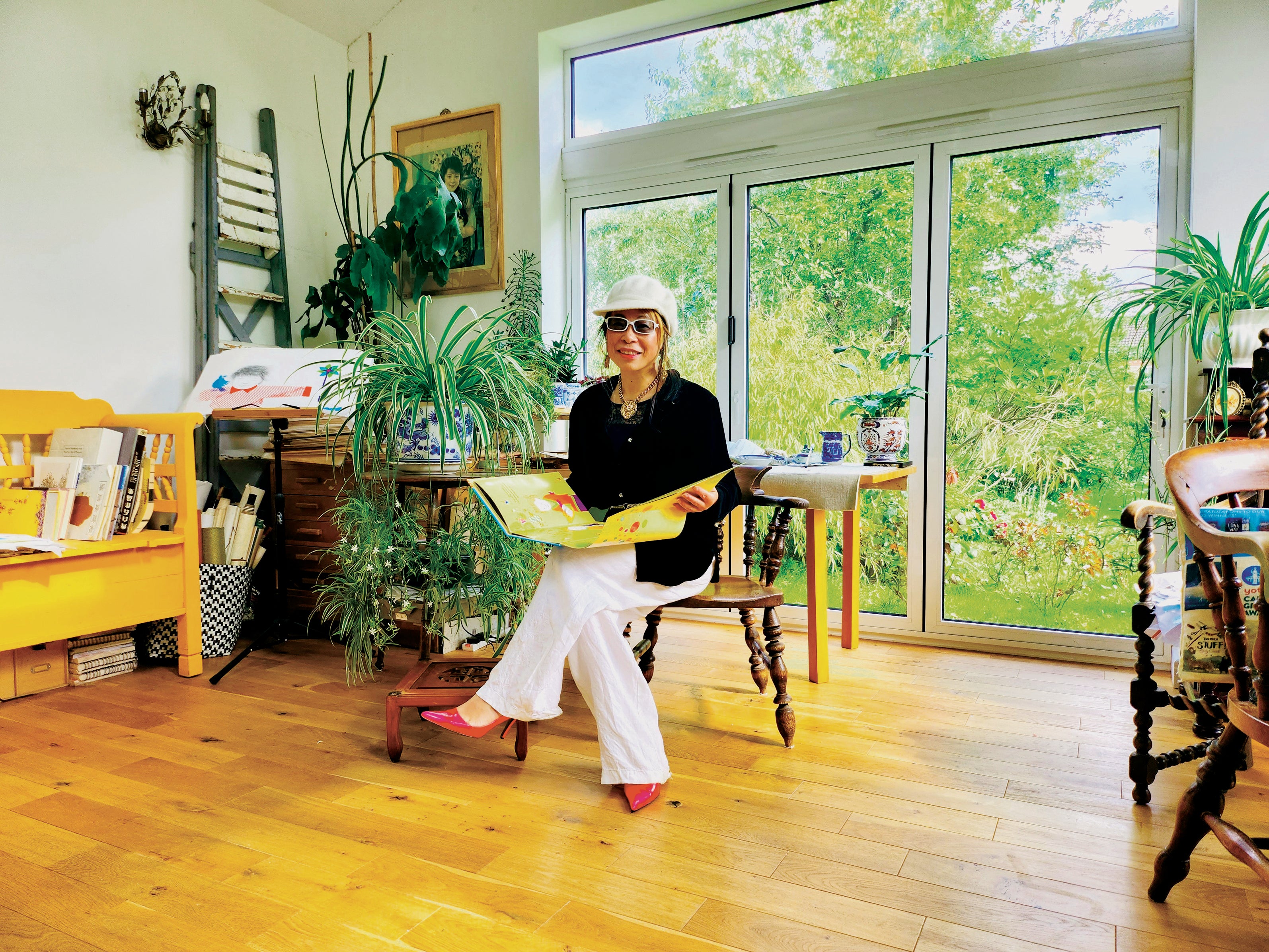Ancient skills help share new ideas
THE ARTICLES ON THESE PAGES ARE PRODUCED BY CHINA DAILY, WHICH TAKES SOLE RESPONSIBILITY FOR THE CONTENTS

Illustrator Yu Rong sits in a lounge chair in her studio in the small village of Coton, near Cambridge, England, and contemplates her journey.
The studio is part of her house, where cherry trees, moonflowers, peonies, and lush greenery surrounds the backyard. It is the place where she transformed herself from a homemaker of 13 years to a cherished children’s book illustrator.
During the past decade, Yu has made a name for herself by collaborating with leading authors in China and abroad, and publishing at least 20 picture books that have been sold in the United Kingdom, the United States, Italy, the Netherlands, Japan, South Korea, and elsewhere.
And she has won prizes and been shortlisted for awards, including one of the most prestigious in her field – the Yoto Carnegie Medal for Illustration, the UK’s highest honour for children’s literature.
When she studied for her master’s degree in the UK, Walker Books, a mainstream British publisher of children’s books, wanted to sign her. She was 28, but her first foray into paper-cutting for a school assignment had made a talent scout exclaim that it was an artistic expression that British people had not seen before.
Yu had not ventured into this traditional Chinese art form before that day, when the university department director asked all of the freshmen to make a piece that could best represent their background.
Paper-cutting popped into Yu’s mind, and the encouragement she had from others drove her to explore it further.
“My affair with paper-cutting is an inadvertent one. Things grow in the gardens that were never sown there. Despite that, when I pick up the scissors and coloured paper, it doesn’t feel foreign. Paper-cutting is a folk art that Chinese people are familiar with. So, perhaps, it has long been embedded in my mind,” says Yu.
Bringing down the curtain on her studies at the Royal College of Art, Yu chose to move to Coton with her German husband, who teaches at Cambridge University.
In the small village 50 miles from the bustling capital, Yu gave birth to three children and wound up doing most of the housework. During the following 13 years, her busy home life contributed to the fact that she managed to publish only two books.
At the age of 43, Yu told herself, “It’s time to think for myself”. In the same year, she published Free as a Cloud in China, which tells the story of a free myna bird that loses its desire to sing after being taken from the jungle and confined in a beautiful and spacious home.
The book’s illustrations, in which extensive use of paper-cutting is employed, were described by publishers as appearing “out of the blue as an exceptional piece” at a time when children’s picture books were not yet flourishing in China.
To add additional detail, Yu applies pencil, accentuating features, such as the folds in the fabric. That combination of paper-cutting and pencil drawing has formed Yu’s unique style and is present in many of her works.
As a traditional Chinese art form, paper-cutting dates back around 2,000 years, to when Cai Lun, an official in the Eastern Han Dynasty (25-220), invented paper.
By combining scissors and symbolic red paper, early Chinese paper-cutters were able to display a wide range of patterns, from a single image to symmetrical designs. Common motifs throughout time have included representations of harvests, animals, and mythical stories, which express Chinese people’s gratitude for a good life, or hope for the future.
The art form requires skill to carve a simple piece of paper into an expressive scene, but the more Yu does it, the more inspired she feels. Whether she overlaps the paper, folds the pieces in half, carves the sheets, or adds pencil drawing later, her persistent practice often ends in new ideas.
Yu says she now enjoys “playing” with her tools, and she values the fact that paper-cutting has come to embody her cultural background as a Chinese person. She grew up near a bamboo forest in Southeast China’s Jiangsu province but has been away from her home town for 35 years. Despite that, Yu feels her bonds with China remain deep. “My roots are in China, and Chinese art always inspires me.”
Zheng Wanyin contributed to this story.
Subscribe to Independent Premium to bookmark this article
Want to bookmark your favourite articles and stories to read or reference later? Start your Independent Premium subscription today.